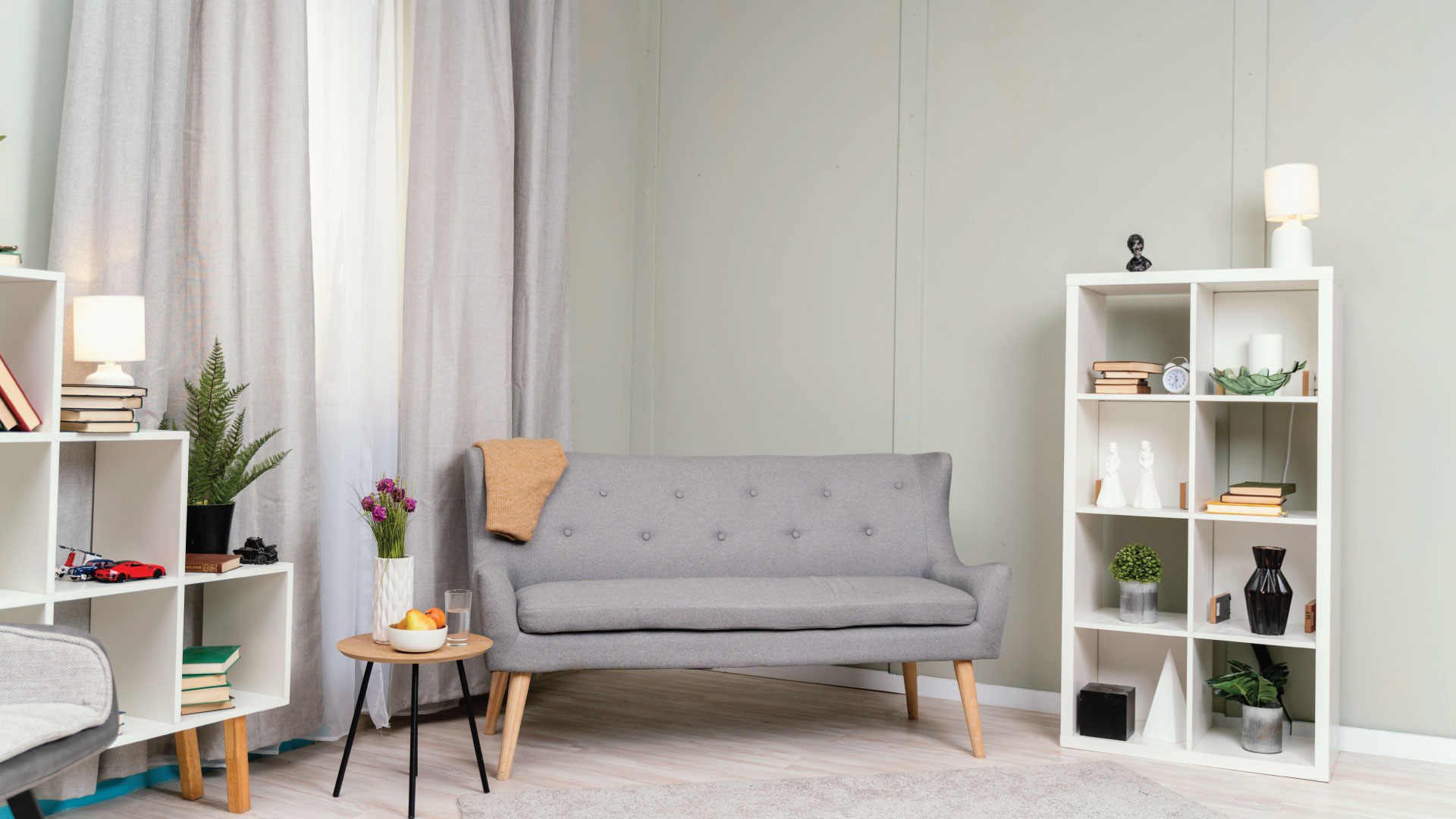
Choosing the right paint color for small spaces can make a huge difference in how the room is perceived. Colors can influence mood, the sense of space, and how light reflects in a room. If you’re looking to refresh a small area in your home or business, the right paint color can make the space feel larger, cozier, or even taller. Here are some essential tips to help you choose the best paint colors for small spaces.
1. Opt for Light and Neutral Colors
One of the most effective tricks to make a small space look bigger is to use light and neutral colors. Colors like white, beige, soft gray, or pastel tones reflect natural light better, giving the illusion of more space. A light tone not only makes the environment feel airier but also provides a sense of cleanliness and serenity.
White, for example, is a classic and timeless option. It not only reflects light effectively but also makes the walls “recede,” visually expanding the room. If you’re worried that white may be too simple or monotonous, you can opt for warmer variations like off-white or ivory.
2. Use Cool Colors for Depth
Cool colors like soft blue, mint green, and lavender are also ideal choices for small spaces. These tones tend to recede visually, making a room appear larger than it really is. Like light colors, cool tones also reflect light but with a more calming and relaxing touch.
A soft blue tone, for example, can create a tranquil and relaxing atmosphere in a small bedroom or bathroom. Mint green, on the other hand, can bring freshness to a small kitchen. Be sure to choose softer shades within the cool color palette, as dark colors, while beautiful, tend to make a small space feel more enclosed.
3. Monochromatic Colors for Uniformity
Using a monochromatic palette can be an effective strategy for small spaces. Painting the walls, ceilings, and trims in variations of the same color can make the room feel uniform and continuous, creating the illusion of spaciousness. For example, if you choose a light gray for the walls, you can use a lighter or darker version of the same gray for the trims and ceiling.
This approach not only helps eliminate strong visual lines that can make a room feel smaller but also adds a modern and elegant look to the space.
4. Smart Use of Dark Colors
Although light colors are the preferred option to visually enlarge small spaces, that doesn’t mean you can’t use darker tones. In fact, when used correctly, dark colors can add a dramatic and cozy touch to a small area.
For example, an accent wall in a deep tone like navy blue or emerald green can add depth and sophistication. By limiting the use of the dark color to just one wall, you can avoid making the space feel too closed in. Additionally, pairing dark colors with light furniture or metallic details will help maintain visual balance.
5. Consider the Lighting Scheme
The amount of natural light entering a room is crucial when choosing paint colors. If your small space gets plenty of natural light, you can afford to go with darker colors, as the sunlight will help balance the atmosphere. In rooms with little light, it’s best to lean toward lighter colors that can reflect the available light more effectively.
In addition to natural light, it’s also important to consider artificial lighting. Warm light bulbs can slightly alter the tone of the paint, especially in cool or neutral colors. Therefore, it’s advisable to test the paint with different lighting types to ensure the chosen color maintains its desired appearance under various conditions.
6. Make Use of Vertical and Horizontal Stripes
If you’re looking to add a bit of personality to a small space without overwhelming it, consider using vertical or horizontal stripes on the walls. Vertical stripes can make a room appear taller, while horizontal stripes can make the walls look wider.
While stripes should be subtle and in complementary tones, this technique can be especially useful in narrow hallways or small bathrooms. Additionally, stripes add an interesting visual element without making the space feel overwhelmed by color or design.
7. Think About the Paint Finish
The paint finish also plays an important role in how a small space is perceived. Paints with a satin or semi-gloss finish tend to reflect more light, which can help make the space appear brighter and more spacious. However, shinier finishes can highlight imperfections in the walls, so if your space has many irregularities, a matte or eggshell finish may be more appropriate.
Conclusion
Choosing the best paint colors for small spaces involves finding a balance between light, visual perception, and personal style. Opting for light, cool, and neutral colors is often the best strategy to create the illusion of spaciousness. However, dark colors and smart design techniques can also transform a small area into a cozy and personality-filled space. By considering natural light, paint finishes, and monochromatic combinations, you can maximize the potential of any small room, giving it an aesthetic touch without sacrificing functionality.



